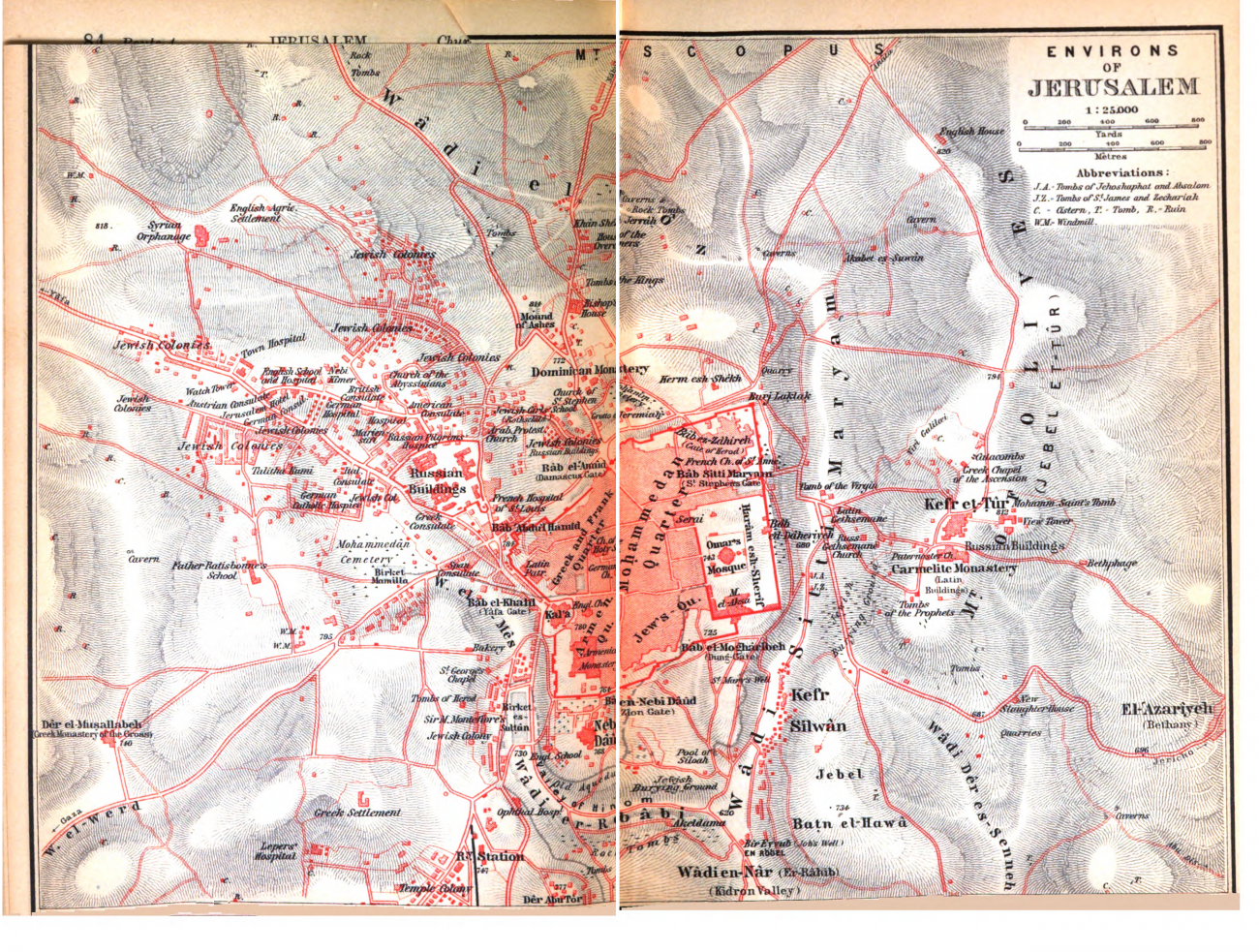The Mount of Olives
Palestine and Syria: Handbook for Travelers
The view of the valley of the Jordan is finest in the evening, but Jerusalem (from the Mount of Olives) is best seen in the light of the rising sun. The hill should therefore certainly be visited twice, especially as an interesting walk to the S. as well as to the N. can be taken.
